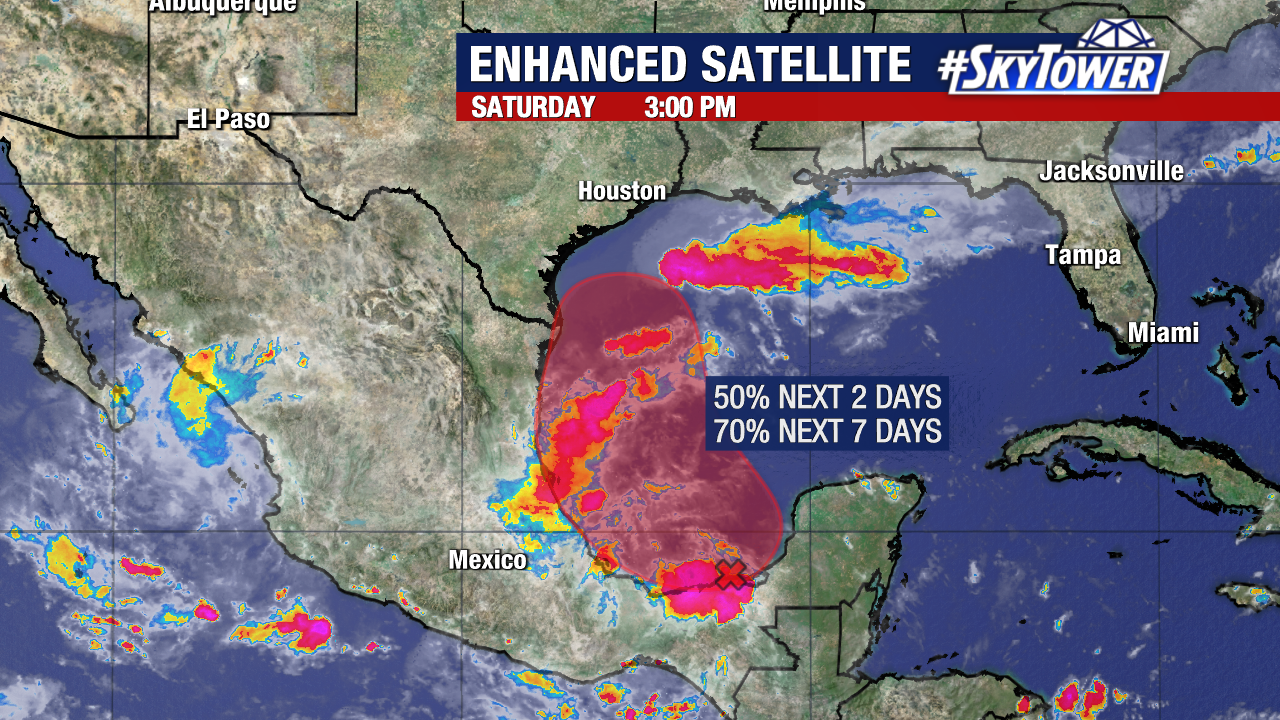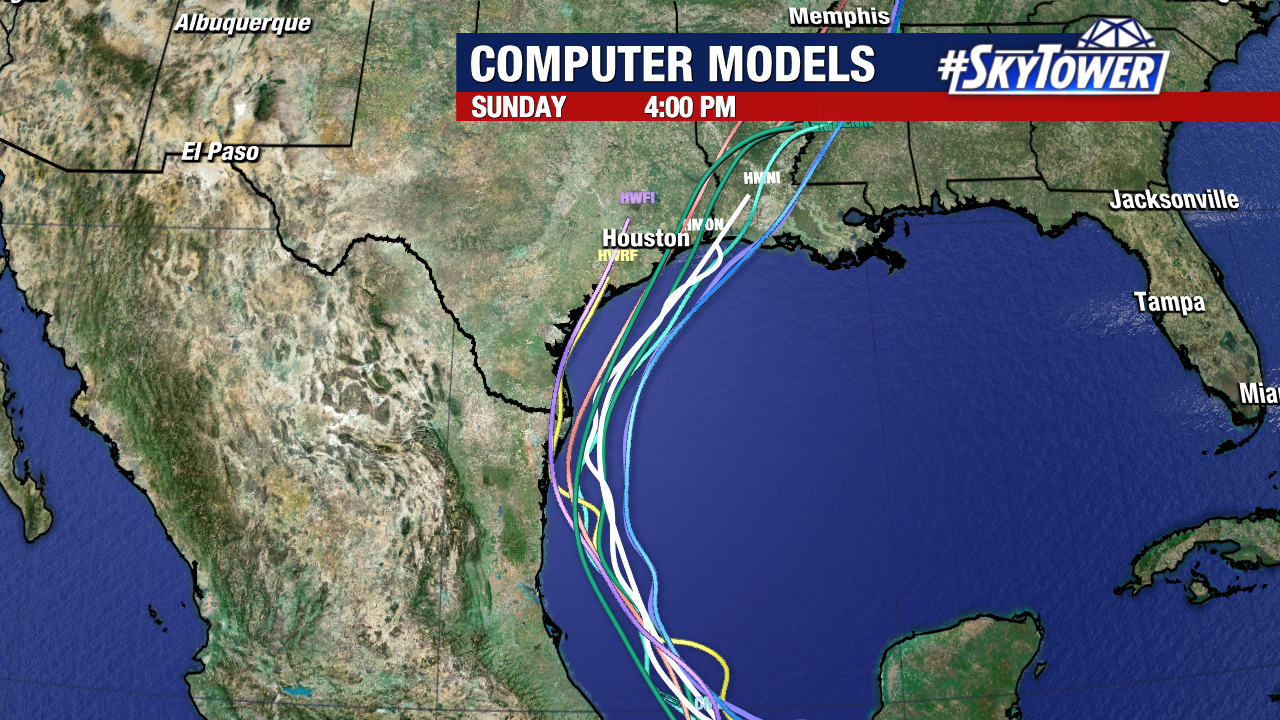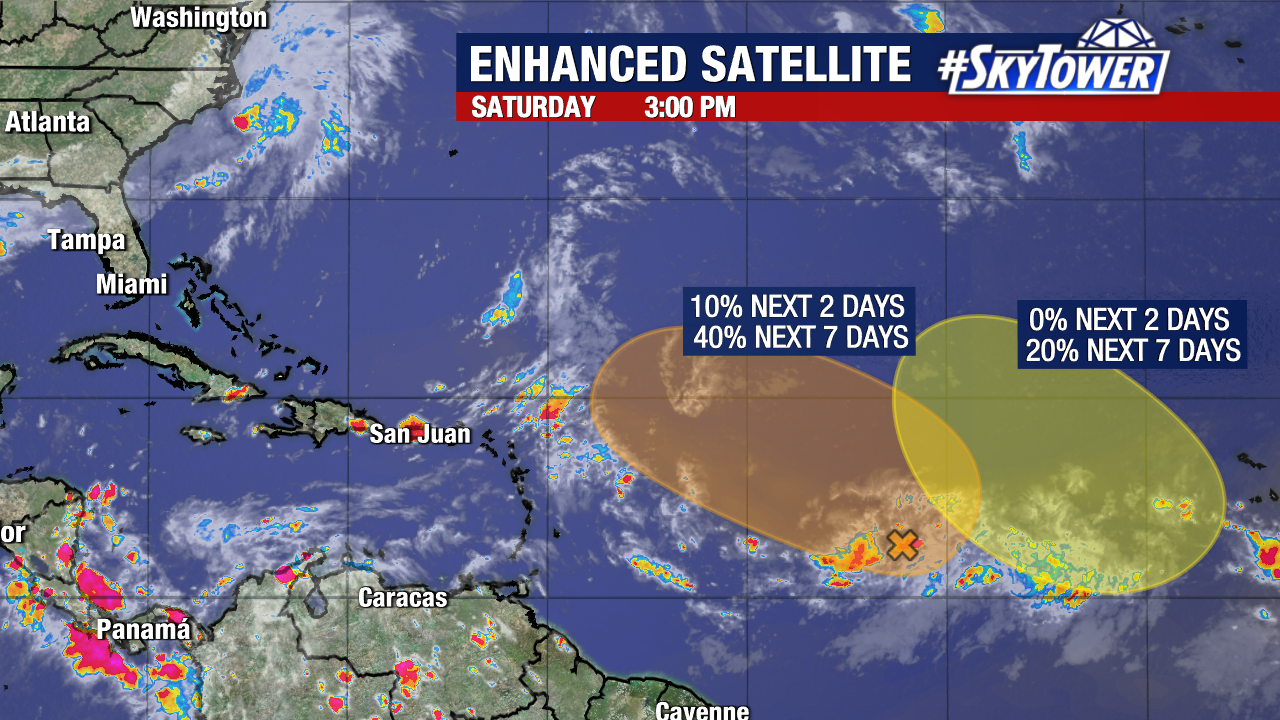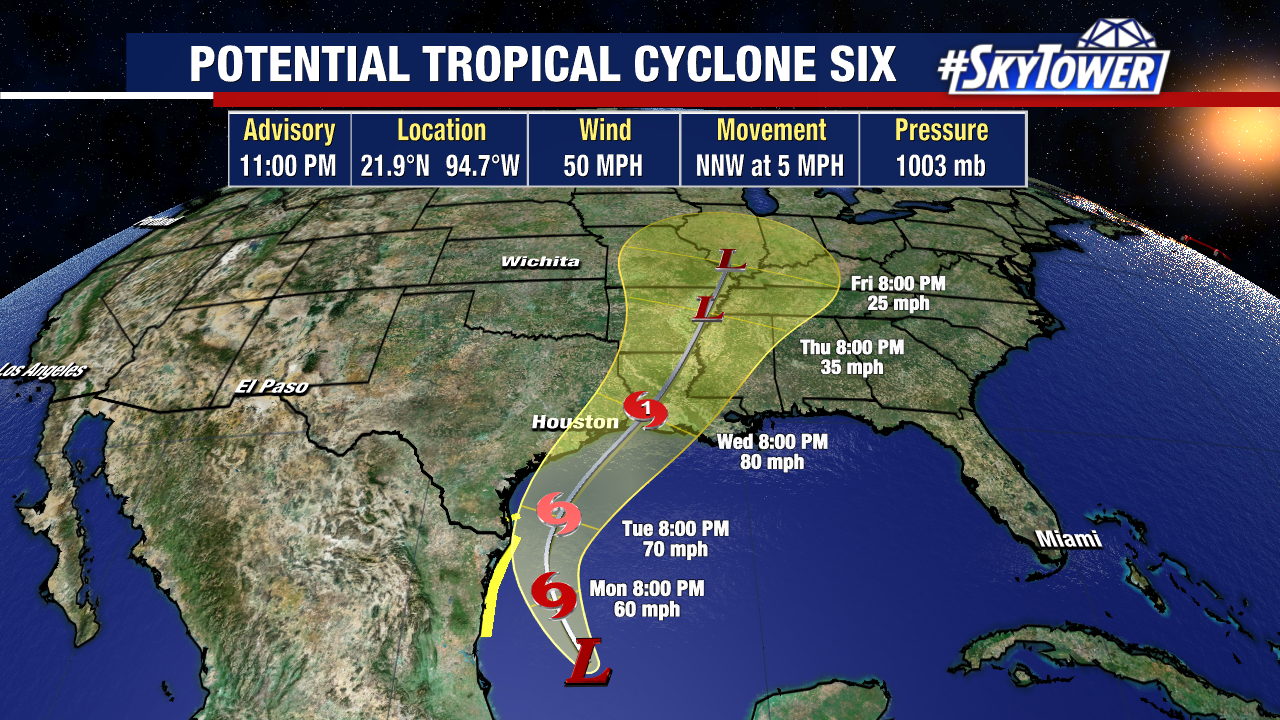
We are now tracking Potential Tropical Cyclone Six in the Western Gulf of Mexico. “Six” is expected to strengthen into a hurricane before making landfall by the middle of this week.
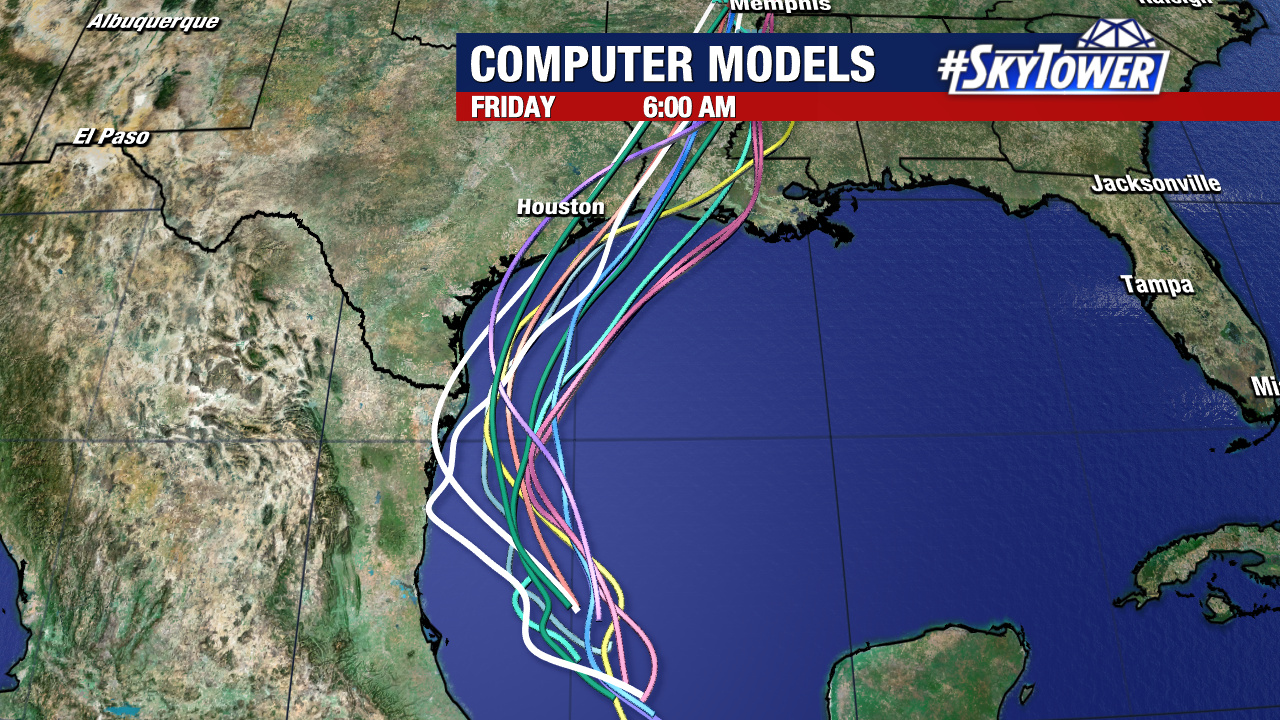
Weather model guidance has been in good agreement regarding the track of this storm. Francine would likely be the name it’s assigned if it organizes into a tropical storm.
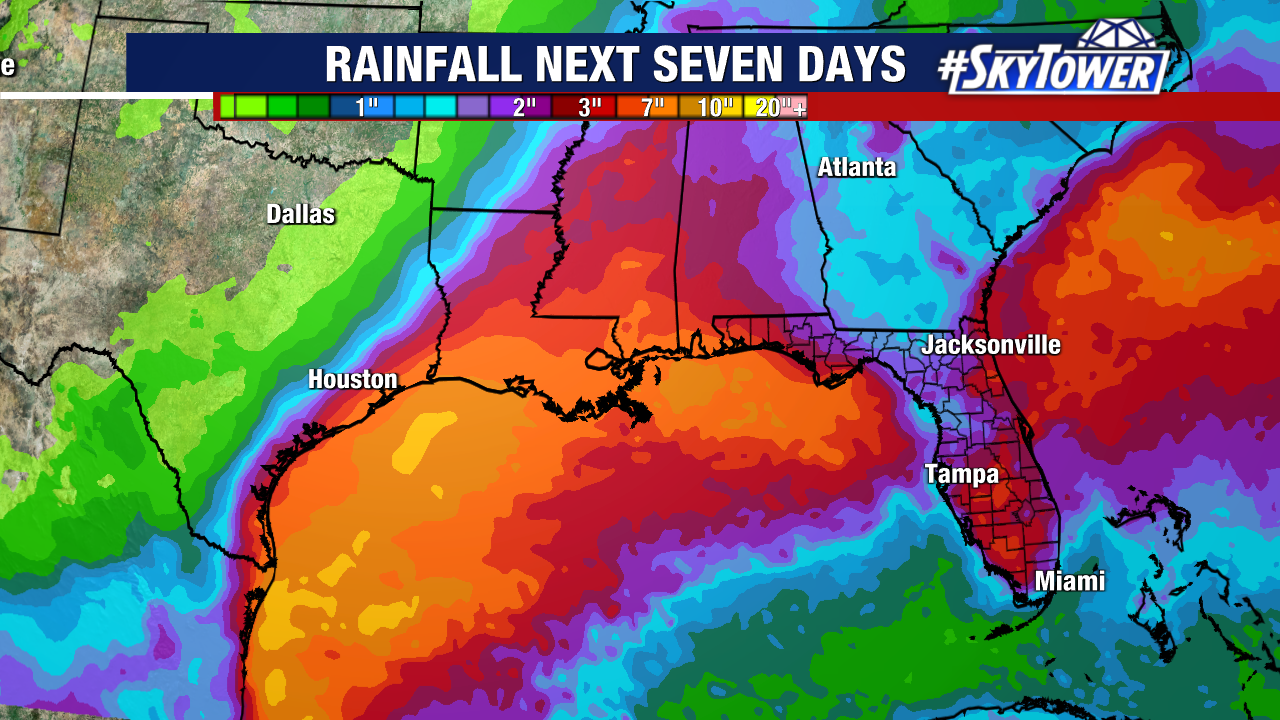
The storm will likely bring 4 to 8 inches of rainfall to areas along the Texas coast into Louisiana with local amounts potentially reaching 12 inches. Coastal flooding and life-threatening surf/rip currents are also possible along the Western Gulf coast.
Damaging tropical storm and hurricane-force winds are expected for areas impacted by this storm. Tropical storm watches are now in effect for portions of the Texas Gulf Coast. Additional watches and warnings will be needed over the next few days.
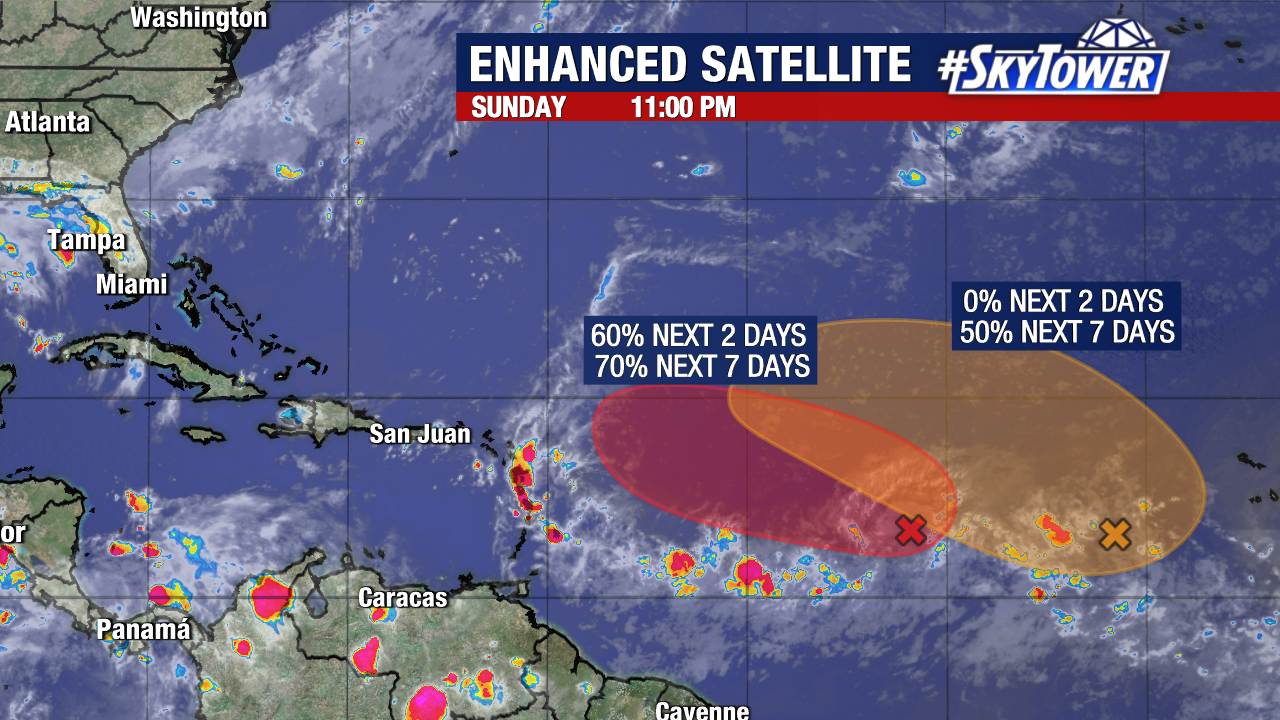
There are two additional tropical disturbances we are monitoring in the central tropical Atlantic. Early indications still suggest that upper-level steering would likely pull these systems north and away from Florida.

